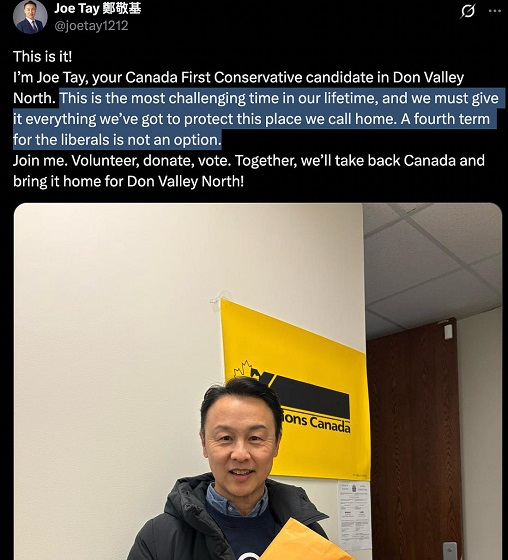Also Interesting
A STEP-BY-STEP GUIDE ON HOW TO GAIN INSTAGRAM FOLLOWERS FAST

Instagram has quickly evolved from its original perception as a friendly app for youngsters to a real content promoting, sale, device management, and community building tool for individuals and brands. It’s one of the most popular long-distance social networking places in the world, with more than 200 million active monthly users exchanging 60 million pictures and 1.6 billion interests every day. If your Instagram influence isn’t as strong as you believe, now could be a good time to work out how to improve your strategies for having real engagement and buy Instagram followers. The larger your crowd grows, the more opportunities you’ll have to attract customers and provide them with exclusive experiences. Begin developing your identity in the right direction with these Instagram tips for increasing followers.
- Make a unique hashtag.
A dedicated, heritage, or marked hashtag allows you to essentially create an array of your best content. When a prospective follower finds you from another extremely concentrated on tag, they will undoubtedly follow you and see your top posts. You should also try having an unique tag for all of your Instagram marketing activities. This is sometimes a superior option because it often feels less constrained than using anything more explicit to your company, for example, your organization name. As a result, campaign hashtags are often used by Instagram followers, which attracts the attention of their groups. If they share your interests, they will start following you as well.
- Cross-promote your special hashtag.
It’s great that you created a hashtag for your organization, but who knows who would use it to spread content about you? Make sure it’s in your profile but take the game off and have it imprinted on your records, ads, shop signs, and other relevant times. If you’re on the radio or TV, tell people to use your hashtag. Incorporate online and offline missions by ensuring it’s reported on the other media accounts, website, and email impacts. Don’t just assume that people would find it.
- Use hashtags that are exclusive to the field.
You need followers who are enthusiastic about what you do and hold. Using words that are not exclusive to the field can result in a small number of followers. As a result, you can use hashtags in your posts that your target audience can specifically search for. The more explicit you are, the more interested people you will get, and the more often they will become devout followers. Furthermore, using more specific brands reduces the number of competitors vying for the followers of related individuals you’re interested in. As a result, the data would be easier to find and, as a result, easier to track.
- Try not to be too monotonous.
When it comes to Instagram caption ideas, you can look beyond the single term, straightforward hashtags. Of course, you can use those as well, but mix it up and use hashtags to share a portion of your post. Be funny, surprising, or silly – just don’t be BORING. WeWork, a community-oriented workspace organization, excels at this, and they add a fantastic mix of Instagram material as well.
- Get to know the surroundings.
By going to the hunt page and selecting the Places tab, you can see what’s going on in a specific territory (say, your area, a city you’re working on promotions, or even an event in a specific area). Then, type for the sake of the location to see all geotagged posts for that location.
- Begin the discussion
Individuals are continuing to use social media platforms as a point of touch with brands, regardless of whether it is for spontaneous queries and discussion, real customer service inquiries, or acclaim for their top brands and products. Furthermore, you should be powerful and accessible on Instagram for your followers. Attempt to respond to as many questions or comments as possible, as it could be the difference between gaining another consumer, follower, or strengthening your interaction with your viewer. It is critical to obtain the care and consistency required to convert a visitor to your profile into an adherent.
- Thank your Instagram followers.
To summaries, when you please your Instagram followers, you see the outcome in community growth. We’ve given you a lot of ideas for conceptualizing and planning content, so make them a habit that feels authentic to your picture personality. As a result, avoid being needy, deal-driven, or standardized.
- Create your own Instagram appearance.
It’s human nature to want to blend in, but on Instagram, you need to stand out. Frooti, an Indian refreshment company, has developed an especially remarkable visual substance theme, which is immediately noticeable if a customer sees a Frooti message in their newsfeed.
CONCLUSION
For certain information, this entails sprinkling in messages that are genuinely meant to bring a smile to followers’ faces and build professional relationships. Remember to provide content to your followers as if they had been friends on your own feed: this may include uploading videos, rousing content, or simply re-sharing interesting photos or fine art (all properly attributed, of course) that will provide your followers a mental break during the day.
Also Interesting
The bizarre story of Taro Tsujimoto

The National Hockey League (NHL) has seen its fair share of strange moments, but few compare to the bizarre and hilarious tale of Taro Tsujimoto, a player who never existed. His “selection” in the 1974 NHL Draft remains one of the most legendary pranks in hockey history. If you want to wager on actual players, making the 1xBet app download is definitely a great idea.
In the 1970s, the NHL Draft was a much less glamorous event than today. It was a tedious process conducted over the phone, with teams calling in their picks. The 3 biggest highlights of what happened during that year’s draft were:
- the draft dragged on for hours;
- there were multiple rounds and teams selecting unknown prospects from obscure leagues;
- frustrated with the monotony, Buffalo Sabres general manager Punch Imlach decided to have a little fun.
As the 11th round approached, Imlach instructed his team’s representative to draft Taro Tsujimoto, a supposed forward from the Tokyo Katanas of the Japan Ice Hockey League. The name sounded authentic enough. The league officials, unfamiliar with Japanese hockey, accepted the pick without question. By downloading the 1xBet app you will also be able to wager on great NHL teams too.
A small problem
There was a small problem with all of this, as 2 things didn’t exist: Tsujimoto and the Tokyo Katanas. Imlach had completely fabricated the player as a joke, taking advantage of the NHL’s lack of verification. When it comes to NHL wagers, there is no better platform than the 1xBet Canada site.
For weeks, the league listed Tsujimoto as an official draft pick, and even some newspapers reported on Buffalo’s mysterious new Japanese prospect. Eventually, the Sabres admitted the hoax, and the NHL was forced to retroactively erase the selection from its records.
Despite being a fictional player, Taro Tsujimoto took on a life of his own. Buffalo Sabres fans embraced the prank, and over the years, his name has become a cult legend in hockey culture. Some fans even wore jerseys with “Tsujimoto” on the back. The joke persisted so much that when EA Sports released NHL video games, players could occasionally find Tsujimoto in the game’s draft pool as a hidden Easter egg.
More than just a prank, the story of Taro Tsujimoto highlights 2 things: the quirks of old-school sports management and the creativity of one of hockey’s most colorful executives. Today, with the draft process being highly scrutinized and broadcast live, such a prank would be impossible. But Tsujimoto’s legacy lives on as one of hockey’s greatest inside jokes. What is not a joke are the great rewards that a platform like the Canadian 1xBet site can give you.
Also Interesting
60% of Canadians gamble each month – why the industry is going from strength to strength

When it comes to regulating gambling, Canada has a somewhat relaxed approach. The Canadian Gaming Association oversees the industry, but it’s up to individual provinces to enact and enforce any laws relating to online casino gaming, sports betting, traditional casino gaming, and other forms of gambling.
Canada’s online casino gaming laws are not totally clear, but individual provinces are starting to put this right. Ontario was the first and did so when it launched its own regulated igaming market in April 2022. Now some other provinces have followed suit, creating a safer igaming environment for players in those provinces. Below is a look at gambling in Canada compared to other parts of the world, at gaming laws in Alberta compared to other provinces, and at the future of the Canadian, US, and UK gambling industries.
Canada: a forever love of gambling
Gambling in some form or other has always been popular in Canada. Way back in the 1990s, research found six in ten Canadians (60%) gambled every month. Additionally, four in ten (43%) spent between 1 and 20 Canadian dollars on gambling. Fast forward to today and the Canadian gambling market is worth 14.2 billion US dollars as of January 2024, according to data on the website of consumer and market data company Statista.
It seems Canada enjoys wagering just as much as two other countries that love a gamble: the US and the UK. Data on the Statista website shows that 49% of US adults took part in gambling activities in 2023. Fifty-six percent said their attitude towards gambling had relaxed, compared to the 50% of 2019.
The UK returned similar stats for the same year. Forty-eight percent of adults reported engaging in gambling activity. Online casinos generated the most gross gambling yield in 2023, but it was the nation’s National Lottery that people played the most.

Alberta: following Ontario’s lead
The regulatory developments in Ontario have triggered movement in Alberta. In May 2024, Bill 16, the Red Tape Reduction Amendment Act, made it through the process and later received Royal Assent to become law. The act removes the monopoly of gaming by a single government entity and will allow private operators, licensed by Alberta’s provincial regulator, to provide online gaming services in Alberta, meaning players will have a choice of more than one Alberta online casino to play at.
The regulation transforms Alberta into one of the more liberal provinces when it comes to online gambling, others being Quebec, Ontario, and British Columbia.
Several provinces, such as Novia Scotia and Northwest Territories, have no provincially regulated online gaming sites. Some also restrict betting on horse racing and/or other types of sports betting, obliging citizens to use international betting sites for freedom from caps and betting on as many events as they wish.

What lies ahead for the Canadian, US, and UK gambling industries?
Canada’s appetite for gambling is clear, and the industry’s online sector is beginning to thrive. Ontario has enjoyed vast success by creating its own regulated market, one which, in just its first year, saw Canadians place billions in wagers and the industry itself generate more than a billion in total gaming revenue.
Canada can expect to see other provinces follow Ontario’s lead and allow private operators to provide services in the province under license. The purpose of the regulation is player protection. Any province that develops a regulated market will focus on this, so there will also be regulations around the advertising of gambling services.
The US
Gambling online is the future for the US, too, although states are slow to legalize it. As of September 2024, 38 states had legalized sports betting, following the US Supreme Court’s ruling that states could regulate sports gambling directly.
Despite allowing sports betting, some states only permit in-person betting, and only a few states allow online casino gaming. Operators believe online casino gaming is the future of gambling.
The UK
In the UK, the use of artificial intelligence (AI) will get bigger and bigger. Companies have realized AI can enhance players’ experience and are embracing it more and more. For instance, sports betting websites can use it to crunch data and provide iGamers with stats and other data to make better betting decisions. They’re also understanding they can use AI to prioritize content players are likely to be interested in and to personalize their offerings and services to players’ preferences.
Canada enjoys gambling as much as America and the UK. Although laws around igaming are more of a grey area in Canada, some provinces are clearing the issue up by creating regulated markets and experiencing great success. As time goes by, more are sure to follow.
-

 2025 Federal Election2 days ago
2025 Federal Election2 days ago2025 Federal Election Interference from China! Carney Pressed to Remove Liberal MP Over CCP Bounty Remark
-

 2025 Federal Election2 days ago
2025 Federal Election2 days ago2025 Election Interference – CCP Bounty on Conservative Candidate – Carney Says Nothing
-

 2025 Federal Election2 days ago
2025 Federal Election2 days agoPoilievre on 2025 Election Interference – Carney sill hasn’t fired Liberal MP in Chinese election interference scandal
-

 2025 Federal Election1 day ago
2025 Federal Election1 day agoJoe Tay Says He Contacted RCMP for Protection, Demands Carney Fire MP Over “Bounty” Remark
-

 2025 Federal Election1 day ago
2025 Federal Election1 day agoHong Kong-Canadian Groups Demand PM Carney Drop Liberal Candidate Over “Bounty” Remark Supporting CCP Repression
-

 Censorship Industrial Complex2 days ago
Censorship Industrial Complex2 days agoWelcome to Britain, Where Critical WhatsApp Messages Are a Police Matter
-

 2025 Federal Election1 day ago
2025 Federal Election1 day agoAlcohol tax and MP pay hike tomorrow (April 1)
-

 Media2 days ago
Media2 days agoTop Five Huge Stories the Media Buried This Week





